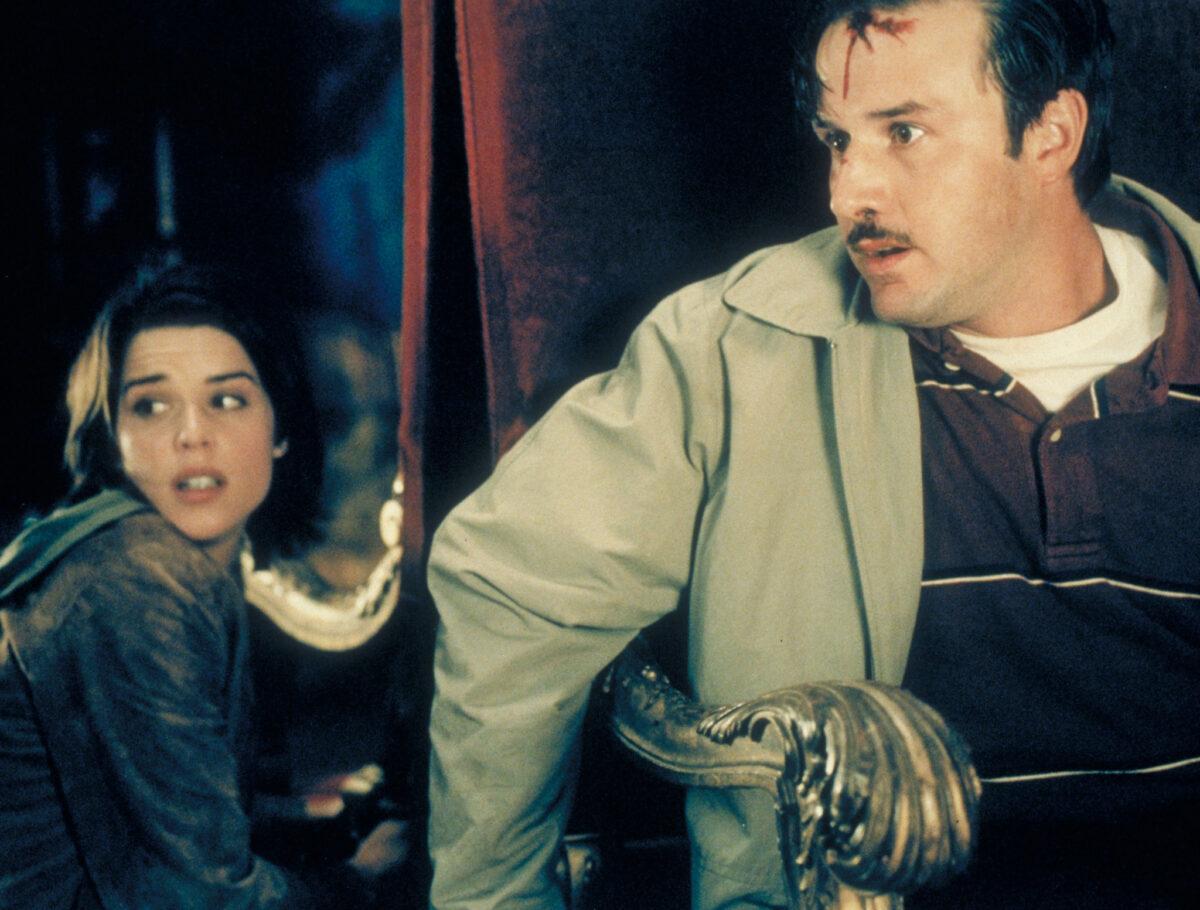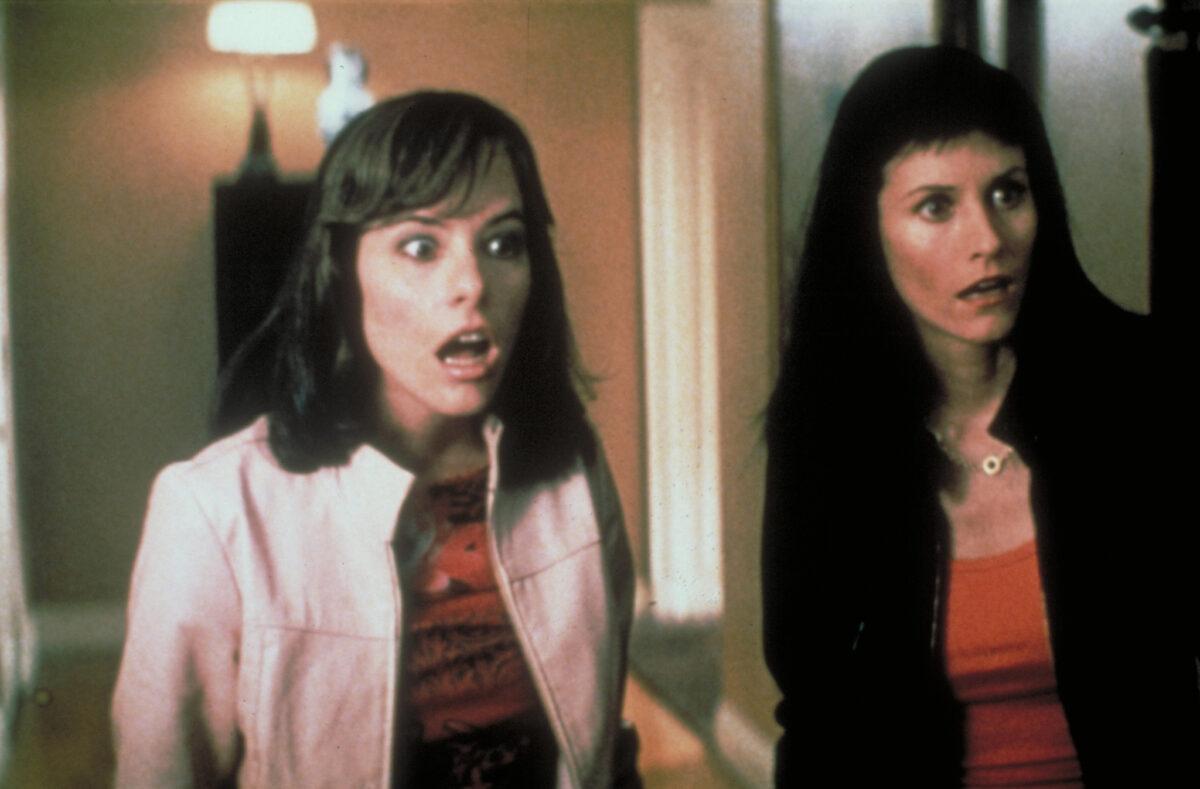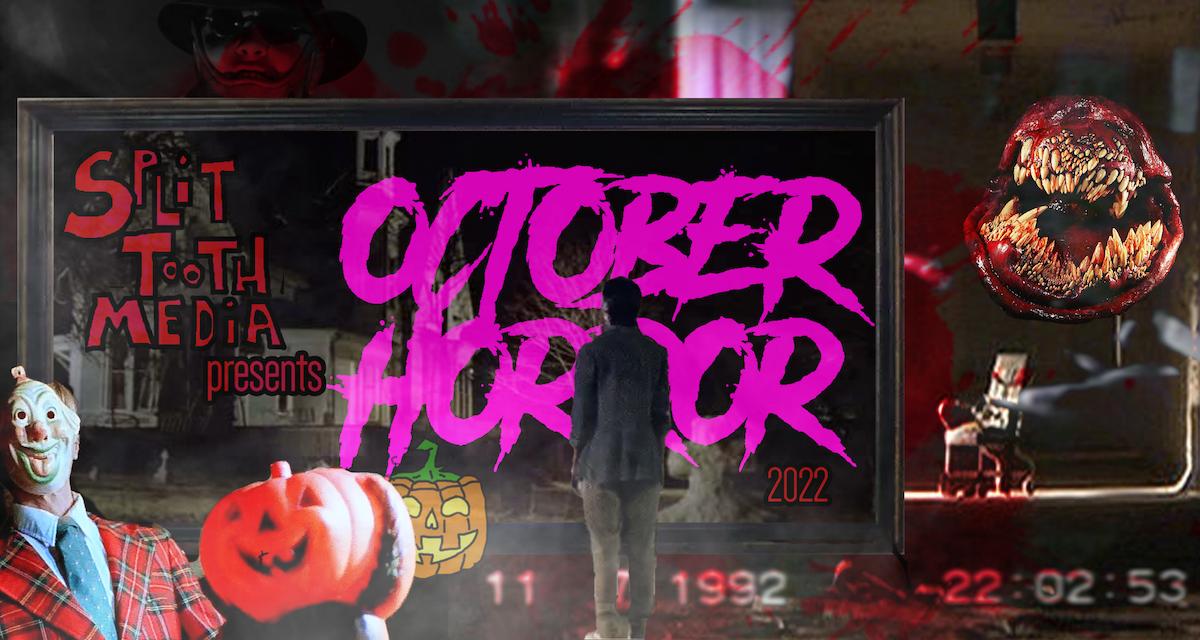Wes Craven was obligated to make Scream 3. His frustration with the Hollywood system that forced him into sequel servitude drives the film and makes it the best of the series.
Wes Craven initially passed on the much-discussed screenplay for “Scary Movie,” considering its slasher plot, for all its postmodern eccentricities, too similar to territory he’d already explored. On a 1999 episode of The Directors, he describes his resistance: “I read it and I said I don’t want to go there . . . it was so much back where I’d started.” It was only after wondering whether he’d lost his edge that he agreed to direct Kevin Williamson’s quippy script, later renamed Scream when it was released in 1996. To hear Craven tell it, the film was practically an instant success as well as an albatross. After a well-received test screening in Secaucus, New Jersey, the Weinsteins interrupted a celebratory dinner to make a deal with the director. “They literally walked into the restaurant,” Craven says, “pushed people away, sat down next to [him],” and invited him to become “a Dimension/Miramax guy” with a three-picture deal. Scream 3’s embittered depiction of producers, directors, and their milieu suggests it’s a decision he’d come to regret.
The third, best, and least-loved Scream film transports the action to Tinseltown at its sleaziest, providing reluctant genre legend Craven an opportunity to reflect on both the film industry’s impossibly sordid past and his own Hollywood horror stories. Even more than Wes Craven’s New Nightmare (1994), in which the director appears as himself and reckons with both bringing Freddy Krueger to life and losing control over his creation, Scream 3 (2000) echoes Craven’s frustrations with a system that forced him first into genre obscurity and next into franchise servitude. The Weinstein-produced film also directly addresses the sexual abuse that has proven endemic among film studios since the dawn of motion pictures and now probably most calls to mind Bob and Harvey themselves. Like subversive horror sequels before it (Texas Chainsaw Massacre II [1986] perhaps the most notable among them), Scream 3 finds its director seeming to ask, Is this what you want? The film’s absurd slapstick, baffling cameos, and seamy Hollywood setting all suggest a filmmaker attempting to burn it all down in the name of forestalling future sequels. Craven’s disdain for the material is evident and proves especially subversive in a series built on increasingly self-directed reference and nostalgia.
You are viewing: When Did Scream 3 Come Out

Scream’s Woodsboro is an everytown, only interesting in how deeply uninteresting it is. It’s not a burg out of Stephen King’s Maine that harbors secrets and seeds evil in each new generation. In fact, the sexual assault and murder of Maureen Prescott (Lynn McRee), occuring exactly one year before the first Scream’s events, was so unsettling as to fundamentally change Woodsboro, inviting a media circus and turning a town that looked like a sitcom set into a stage for crimes out of a movie. The anniversary finds everyone on edge when a new wave of killing starts. As a masked murderer stalks Woodsboro, Maureen’s daughter Sidney (Neve Campbell) and her high school classmates, including Randy (Jamie Kennedy), a quintessential “video store guy,” discuss horror movie tropes while journalist Gale Weathers (Courtney Cox) hawks her book about the Prescott murder. It’s her contention that convicted killer Cotton Weary (Liev Schrieber) is innocent, and she turns out to be right. The film’s climax reveals that Sidney’s boyfriend, Billy (Skeet Ulrich), and his friend Stu (Matthew Lillard) were behind both the Ghostface killings and Maureen’s death. The living Scream cast members all return for 1997’s hasty follow-up, where violence follows Sidney to idyllic Windsor College and invites conversations over the merits of sequels. This time, Billy’s mother (Laurie Metcalf) is brandishing the knife and hoping to avenge both her son’s death and Maureen’s affair with her husband. Gale’s relationship with Woodsboro detective Dewey Riley (David Arquette) continues throughout Scream 2, mirroring the actors’ real-life romance. Gale’s book on “The Woodsboro Murders” is turned into the Stab horror film series and her rising fame drives the couple apart by Scream 3. The film finds the very few remaining cast members spread out across California. Sidney lives in a secluded home under an assumed name, Dewey courts the actress who plays Gale in the Stab films (Parker Posey, Oscar worthy as Jennifer), and Gale is lecturing at colleges on the value of cutthroat professionalism.
More than Randy and the film obsessives of the first two Screams or the film industry denizens of the third, Gale feels like a stand-in for her director. Her increasing success can’t help but read like a self-deprecating joke at the expense of horror series like Scream, especially when a member of Gale’s audience asks her, “Was it all worth it?” The lower you stoop, her ascendant career suggests, the higher you’ll reach. It’s likely Craven could relate to someone with grand ambitions and evident talent continually drawn back into the muck by the story (in his case, stories) that made them famous. Even Gale’s dream job, 60 Minutes II,1 calls to mind the lowered expectations necessary to thrive in entertainment. By the turn of the millennium, Craven had already been tempted back into the director’s chair for the piss-poor The Hills Have Eyes Part II (1984) and New Nightmare, a fine enough film that can’t help but play like a warm-up for the ecstatic postmodernism of Scream. Scream 2 and Scream 3 sit on either side of Craven’s passion project, Music of the Heart (1999). It’s almost too perfect a metaphor for the squeeze Hollywood was placing on Craven. Given how bad that passion project turned out to be, this might be remembered as one of the more depressing triple features from a great director — if not for how wonderful Scream 3 is.
Read more : When Can I Rinse After Wisdom Tooth Extraction
Craven makes it clear from the film’s opening helicopter shot that he’s now operating (both unhappily and deliberately) in a debauched, debased world. This is not the sort of helicopter shot that dances with Julie Andrews through the Alps; it’s the kind that follows high-speed chases, turning audiences everywhere into rapt rubberneckers. The chopper lowers us into a sphere of nothing but negative L.A. and showbiz stereotypes. The sight of the Hollywood sign and the sounds of traffic reports place us at the confluence of everything we’ve heard is bad about Hollyweird. Our reintroduction to exonerated Woodsboro killer Cotton Weary reveals that he’s taken advantage of Hollywood’s culture of opportunism to make the transition from convicted rapist and murderer to syndicated talk show host. He’s in the process of negotiating a larger role in Stab 3 than his proposed cameo when we enter his car. He’s interrupted by a call from someone deploying a super-powered version of what’s now a familiar voice-changing device. This time, the killer isn’t just toying with his victim; he asks Cotton, “Where’s Sidney?” The killer, who’ll go on to terrorize the cast of Stab 3, wants to get the cast of Scream back together. As Cotton rushes home to intervene, L.A. itself presents an obstacle in the form of pervasive traffic, including a bus emblazoned with the logo for Stab 3: Return to Woodsboro. As the tagline teaches us, “Even True Stories Have Sequels.”
Cotton’s murder puts a stop to the production of Stab 3 at a time when the cast and crew are already on high alert. The script changes with the day and both David Schwimmer and Tori Spelling have elected not to return for the conclusion to the trilogy. Spelling has been replaced by Emily Mortimer’s Angelina, who won the role in a contest. Paradoxically, the level of insight into films and filmmaking seems lower in Hollywood than in Woodsboro. Craven seems eager to remind us that the people who decide which movies get made probably don’t watch very many of them. Characters make misguided references to the shower scene in Vertigo and describe a gaudy mansion as “Old Hollywood.” Like the film talk, Scream 3’s physical comedy looks like a crude imitation of what came before. During a third act chase, the killer tosses a knife at Dewey’s head and the handle winds up making contact rather than the blade. That sequence in particular looks like Craven commenting on the increasing absurdity of keeping fan-favorite characters alive. Earlier, Ghostface pursues a Stab actress through storage rooms filled with costumes and props. Grabbing a knife to defend herself, she discovers it’s made of rubber; opening a door, she happens upon clothing racks lined with Ghostface costumes. When Craven’s Miramax peers Jay and Silent Bob show up on a studio tour and shout after Gale, you can tell they’re standing in for every suit who ever called him Wes Carpenter or badgered him for another sequel. Hollywood plays a more metatextual role in the narrative, too, helping explain Campbell’s limited screen time. Craven’s final girl was busy with another role and could only briefly commit to Scream 3.

Even before she makes the trek to L.A., horror movie conventions haunt Sidney’s dreams. The appearance of a ghostly Maureen in a nightmare, made up like a zombie, shows how ubiquitous cinematic shorthand is on our subconscious. Not even Sidney’s tormented imagination is untouched by familiar tropes. Later on, Detective Mark Kincaid (Patrick Dempsey) will initiate his and Sidney’s romantic subplot by acknowledging trauma of his own. “I know what it’s like,” he says, “to be watching a scary movie in your head, whether you want to or not. Watching it alone.” Life imitates art imitating life when Sidney finds herself back in “Woodsboro” on the Stab 3 set. She is taunted by the sound of her mother’s voice and chased by Ghostface through a recreation of her childhood home. Sidney uses the geography of the set to her advantage, but lessons learned from other horror films aren’t helpful this time around. Third installments, unlike franchise starters and sequels, aren’t generally beholden to the same potentially life-saving rules outlined in the first Scream. In a contrivance fitting the film, Randy, who was killed in Scream 2, returns from beyond the grave via videotape to let Sidney, Dewey, and Gale know they’re on their own:
“Is this simply another sequel? Well if it is, same rules apply. But, here’s the critical thing, if you find yourself dealing with an unexpected back story and a preponderance of exposition, then the sequel rules DO NOT apply. Because you are not dealing with a sequel, you are dealing with the concluding chapter of a trilogy.”
Read more : Do Guys Know When They’ve Met The One
Randy underlines that many of Scream 3’s flaws are in fact virtues and suggests that his friends, like their director, are now at the mercy of Hollywood itself.
The “unexpected back story” Randy mentions involves Maureen’s brief time in Hollywood and explains why the killer is leaving behind her photo. Acting under the name Rina Reynolds, she appeared in a trio of exploitation films and fell victim to traumatizing sexual abuse. As producer John Milton (Lance Henriksen) explains, nobody thought anything of it at the time. “It was in the ’70s,” he remarks. “everything was different.” Worse still, he suggests Maureen’s experience was a ubiquitous one, a trope of stories like hers. “You wanna get ahead in Hollywood? You gotta play the game or go home,” he says. Terror followed Maureen home in the form of her illegitimate son Roman (Scott Foley). Rejected by his mother, Roman sets out on an ambitious revenge mission involving a Hollywood career of his own. Scream 3’s climactic reveal takes the series’ metatextual elements to the furthest possible extreme. In addition to helming Stab 3, Roman has been “directing” the action from behind the scenes throughout all three films and even describes his efforts that way (“I’m a director, Sid. I direct”). By documenting Maureen’s infidelities, Roman was able to goad Billy and Stu into killing her and set the Scream series in motion. From his perspective, it’s all one big film, and “what a film it turned out to be, huh?”
When our central characters are finally safe and sound, they convene at Sidney’s secluded home. Detective Kincaid invites her into the living room to join the others for a movie. When she asks what kind, he demurs and Sidney joins him off screen. It’s in keeping with Craven’s feelings toward Hollywood that he neglects to show his cast happily gathered over popcorn. Filmmaking was, at this point, too painful and disempowering an experience for Craven to depict film’s restorative powers with a straight face. He focuses instead on a door left slightly ajar, signifying Sidney’s new fearlessness and leaving open the possibility of sequels. Though this year’s fifth installment includes a dedication to the late Craven in its credits, the film also slaps him in the face by ignoring the events and central twist of Scream 3. Craven’s trilogy capper may have looked like diminishing returns upon release, but the very existence of two additional sequels make its expressions of frustration and powerlessness all the more potent. Neve Campbell has announced she will not appear in the upcoming sixth franchise installment. If you don’t think she’ll be back, you obviously haven’t seen many seventh entries in popular horror series.
Purchase Scream 3 on Blu-ray from AmazonStream Scream 3 on Amazon PrimeStay up to date with all things Split Tooth Media and follow Bennett on Letterboxd (Split Tooth may earn a commission from purchases made through affiliate links on our site.)
Find the complete October Horror 2022 series here:

- What must have sounded absurd in 2000 sounds shockingly plausible in a world with a fifth Scream (just called Scream) and a novel expanding Heat’s narrative (called, unbelievably, Heat 2).
Source: https://t-tees.com
Category: WHEN
